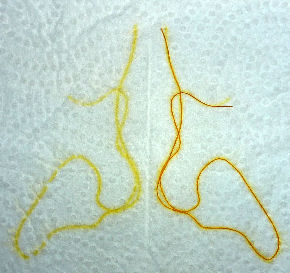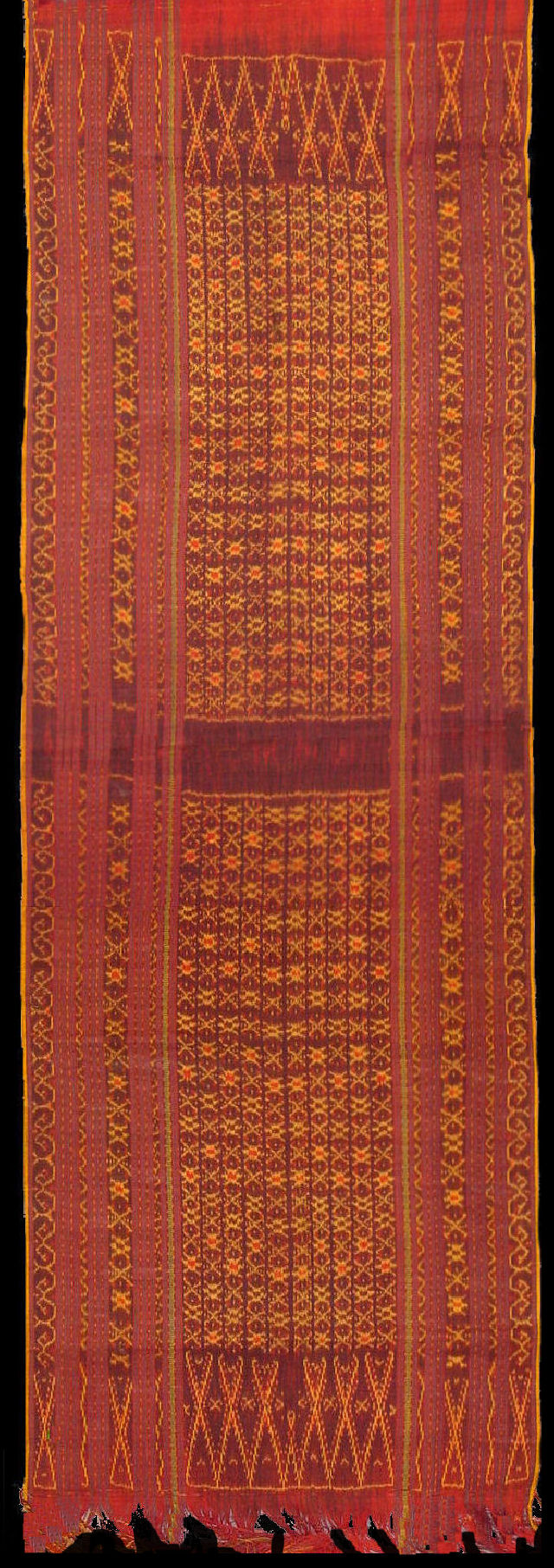| |
251 Flores Group, Ende
Semba (men's shawl)
|
| Locale: | Identification requires further research. |
| Period: | Before 1950 |
| Yarn: | Cotton, hand-spun, fine |
| Technique: | Warp ikat |
| Panels: | 2 |
| Size: | 50.5 x 151 cm (1' 7" x 4' 11") LW: 2.99 |
| Weight: | 200 g (7.1 oz), 262 g/m2 (0.86 oz/ft2) |
| Design: | Clearly patola-inspired overall pattern, which recalls the style Ende from the first quarter of the 20th C. and before, with its elaborate lateral borders. The red dye may have been akar kayu or turmeric. Though in Ende chemical dyes began to be used early in the 20th c. testing (see below) shows that natural dye was used, most likely turmeric. |
| Comment: | [PHOTOGRAPHY PROVISIONAL] The star-like motifs and the colour palette are similar to that of a published Ngada hoba uwa pote. The use of yellow and the flossy fringes are also compatible with a Lio provenance, but there are no published cognates of this design type. The cloth feels lightly starched. (Florinese weavers often work with starched warp.) As curcuma fades quickly after repeated exposure to the sun, this cloth must have been laid aside as a pusaka, or have been acquired shortly after it was made. Either way it probably spent most of its existence in a cupboard, local or colonial. From old Dutch collection. |
| Background: | Chapters on Flores Group and Ende. |
| Sources: | Similar to early Ende cloth depicted in Jasper and Pirngadie, De Inlandsche Kunst - Weefkunst, Plate 4. Also surprisingly similar to a Ngada cloth identitfied as hoba uwa pote in Therik, Tenun Ikat Dari Timur. The image belows shows the result of a failed colourfastness test run on one section of thread cut from the fringe. The tint of yellow imprint on the paper is consistent with curcuma.
 |
| |

©Peter ten Hoopen, 2024
All rights reserved.
|


